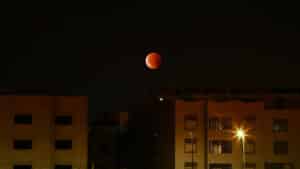“I do not speak of all of you. I know the ones I have chosen; but it is that the Scripture may be fulfilled, ‘HE WHO EATS MY BREAD HAS LIFTED UP HIS HEEL AGAINST ME.’ From now on I am telling you before it comes to pass, so that when it does occur, you may believe that I am He” (John 13:18-19).
The prophecy about the Messiah’s betrayal to which Yeshua refers comes from Psalm 41:9[10]. As strange as it may seem, what I find most remarkable about this prophecy (and many others) is not what it says or how it was fulfilled, but where it is located in the book. Psalm 41 happens to be located in one of the five major literary seams in the macrostructure of the book of Psalms. Psalm 41 is the last psalm of Book I (Psalms 1-41).
According to John Sailhamer, many other Messianic prophecies are also found in literary seams in the books of the Hebrew Bible. In other words, Messianic prophecies appearing in strategic locations in the literary structure of books is not an isolated phenomenon. It is a pattern repeated again and again. And because this pattern is so consistent throughout the Hebrew Bible, this prophecy about the Messiah’s betrayal in Psalm 41 is precisely what we would expect.
Messianic prophecies appearing in strategic locations in the literary structure of books is not an isolated phenomenon.
Consider a few more examples. According to scholars, the book of Zechariah has two parts: Chapters 1-8 and chapters 9-14. Lo and behold, Zechariah’s prophecy about the Messiah coming on a donkey appears in a major literary seam in the book. It’s in the introductory section to the second half of the book (Zech 9:9-11). The book of Daniel has three parts, the middle part being easily identified because it’s the only section of the book written in Aramaic: 1:1 — 2:4a (Hebrew); 2:4b — 7:28 (Aramaic); 8:1 — 12:13 (Hebrew). Daniel 7 has a dual function in the structure of the book. It simultaneously serves as the final chapter to the Aramaic section and the first chapter in a series of Daniel’s visions about the end times. Daniel 7 literally holds the entire book together and is, therefore, a major macrostructural seam. And lo and behold, one of the most important Messianic prophecies in the entire Tanakh appears in Daniel 7:13-14. The list of Messianic prophecies appearing in strategic places goes on (e.g., Gen 49:1, 8-10; Num 24:7-9, 14, 17-19; Isaiah 11-12; Hos 3:5; Mic 4:1-4; Psalm 2; Psalm 72; Prov 30:4; Dan 2:34-35, 44-45; etc.).
We can confidently say that the Messiah is the driving force behind the making of these books!
But why is this such a big deal? It’s a big deal because it proves that the Messiah is not a marginal and/or random topic in the Hebrew Bible. We can confidently say that the Messiah is the driving force behind the making of these books! And since the Messiah is so crucial for the theology of the Hebrew Bible before his first coming, how much more should the Messiah be front and center in our own theology now that he has come (the first time)? We must never allow Yeshua to become a secondary or marginal topic in our theology. Just as he is the glue holding together the books of the Hebrew Bible, so he holds our lives together, giving us meaning, purpose, and hope. Remove him from the equation and all we have left is another manmade religion with endless rules and regulations. So let’s be sure to stay true to the Hebrew prophets by always keeping the main thing the main thing!
“He is also head of the body, the church; and He is the beginning, the firstborn from the dead, so that He Himself will come to have first place in everything” (Col 1:18).










